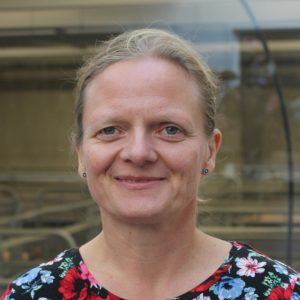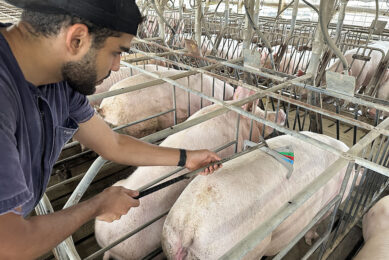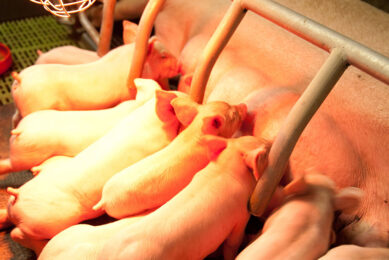Floor space, loose lactation and nursing capacity
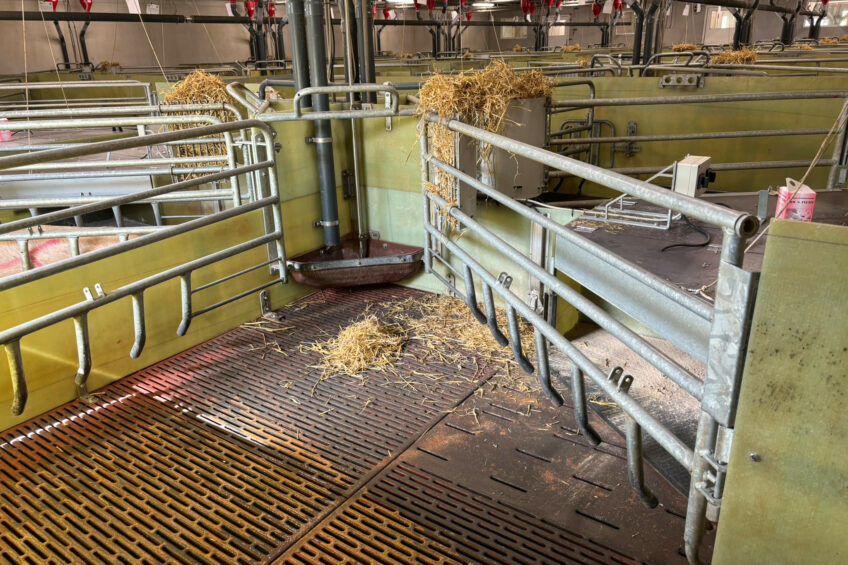
It is very tempting to keep the same footprint per sow when changing from farrowing crates to loose lactation, because if we can keep the same footprint – we can keep the same herd size and the modifications are not so big. Pig welfare expert Dr Vivi Aarestrup Moustsen had a thought experiment and shares the outcomes.
Dr Yuzhi Li recently visited me. She is a professor of swine behaviour and welfare from the University of Minnesota, USA. One of her questions was: could we provide smaller floor space, <6.5 m2 or even <4.0 m2 per pen and still be successful? Pork producers in the USA, like producers in any other place, are very sensitive to floor space required, especially in a farrowing barn, which is the most expensive facility on a swine farm.
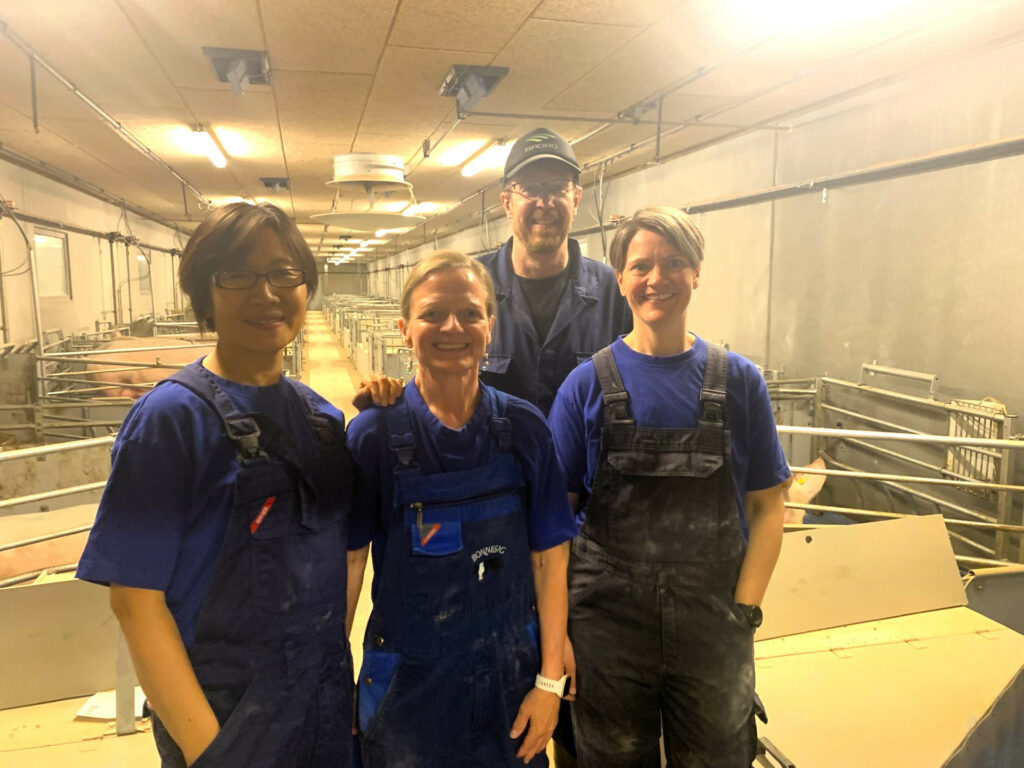
Outcomes from EU studies in the US
Dr Li visited me on an education tour to learn loose lactation housing in Denmark. She was very impressed by swine welfare research in Europe, especially in loose lactation housing. However, she also wondered whether outcomes from European studies could be implemented in the United States. A traditional US-style farrowing pen with crate requires less than 4 m2 (3.78 m2). It would be very difficult for the US pork producers to accept a loose lactation system which will increase the footprint by more than 60% (e.g. from 3.78 to 6.5 m2 per pen).
Discussions with me and especially visits to 2 commercial Danish sow herds (let’s call them pig farm A and pig farm B) helped to answer her questions.
Pig farm A: Farrow-to-wean, 1,400 sows
Herd A is a farrow-to-wean unit with 1,400 sows, aiming to produce 60,000 pigs that are weaned at four weeks of age per year. The pig producer used to have farrowing crates with a surface ranging from 3.3 m2 (1.45 m x 2.25 m) to 4.3 m2 (1.70 m x 2.50 m). The producer decided to switch to a loose lactation system due to the increased litter size and animal welfare concerns on the traditional confinement system.
A new loose farrowing barn was constructed, with 10 sections of 36 pens in each section. Each farrowing pen measures 2.62 m x 2.62 m, with a total surface of 6.8 m2, which exceeds the current Denmark recommendation (6.5 m2) for loose lactation. The new lactation barn has been used since August of 2024.
The pens have fully drained flooring except for the piglet area. The drained flooring was used to maintain a high level of hygiene and thereby supporting high health standard for the pigs and low input of labour. With fully drained flooring, emissions increase. Therefore, this herd is part of a trial run by SEGES Innovation focusing on reducing ammonia and methane emissions by reducing slurry surface and frequently removing the slurry.
Pig farm A – reasons why
When asked why they provide so much floor space to the sow, the pig producer gave the following reasons:
- To prepare for prolific sows with 20 piglets;
- Hoping to wean more piglets by farrowing fewer sows if sow health, comfort and welfare are improved in loose lactation;
- For workers’ welfare and ease of taking care of piglets and the sow.
The pig producer emphasised that his goal is to produce 60,000 weaner pigs per year. If he could produce the pigs by raising fewer sows compared to the traditional system, it would be better for the sow, the worker and the environment. His wife manages and works in the farrowing unit and said that she enjoys working in the loose lactation barn and will never go back to the traditional system for the sake of animal welfare and her own welfare.
However, the pig producer did mention that the loose lactation system is expensive, and production costs are higher compared to the traditional farrowing crates. One of the challenges is the increase in piglet mortality. Currently, piglet pre-weaning mortality is about 16% (with average live born litter size of 21 pigs) and they hope to reduce piglet mortality to less than 12%.
Eventually, consumers will need to pay some of the costs for improving animal welfare. It would be interesting to see how much the costs will be and how much consumers are willing to pay for loose lactation. Regardless there is a steep learning curve – but worth it.
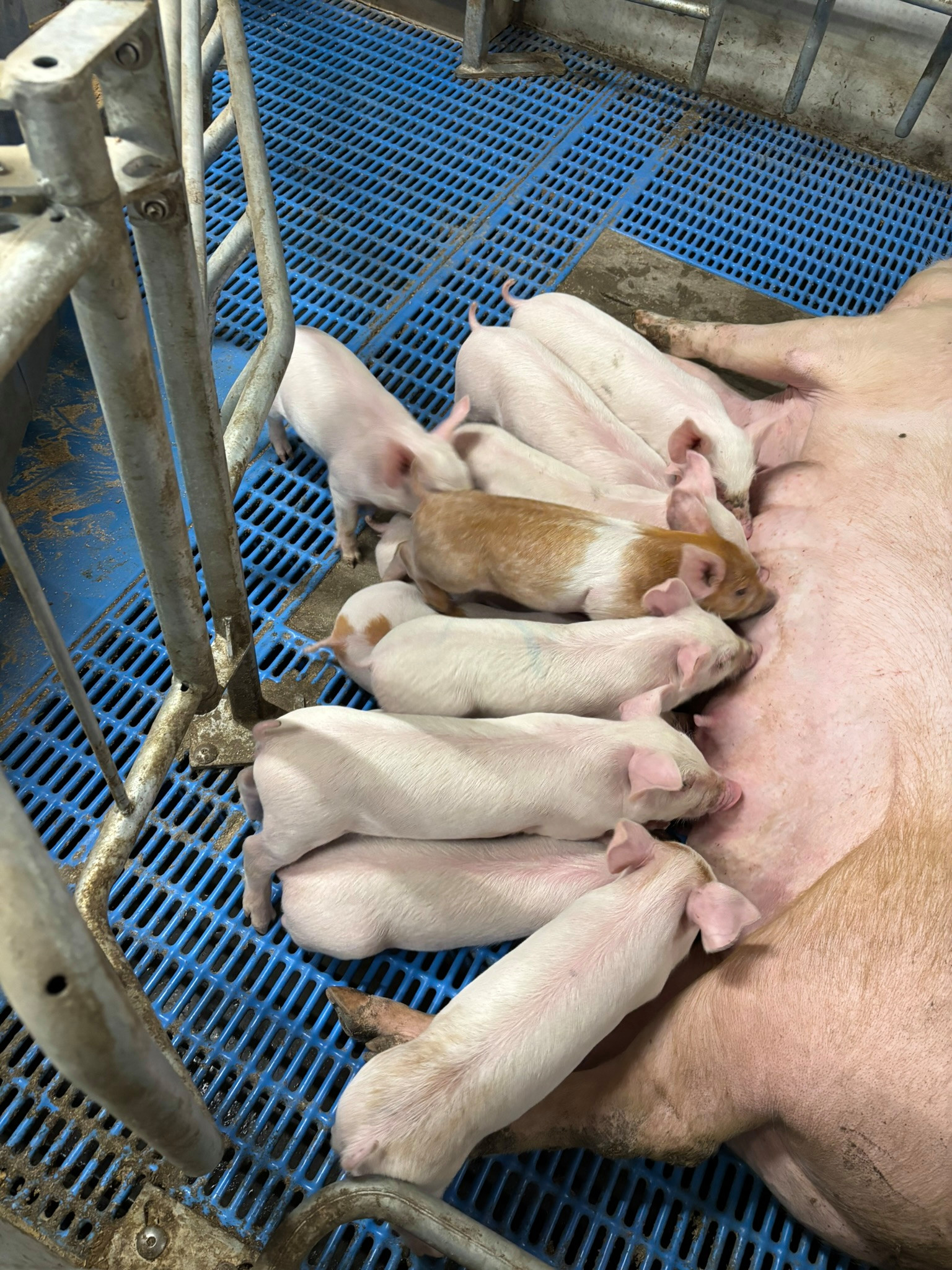 Pig farm B: Farrow-to-nursery, 1,600 sows
Pig farm B: Farrow-to-nursery, 1,600 sows
Herd B is a farrowing-to-nursery unit with approximately 1,600 sows. The loose lactation barn was built in 2019 and has been in operation since December 2019. Currently, all sows are loose housed. Each farrowing section has a large with 60 pens and a small room with 24 pens.
The farrowing pens are 2.40 m x 2.40 m with a surface of 5.76 m2 on slatted cast-iron floors, with rubber mat in the piglet creep area. Piglets are weaned at about 4 weeks of age and transferred to a nursery quarter. Feeder pigs of 30 kg are sold to a nearby pig producer who operates a grow-finishing unit and exports pork to California.
Pig farm B: Reasons why
The pig producer has been closely following animal welfare recommendations. In addition to loose sow housing, they have stopped castration and produced intact male feeder pigs since August 2024.
Currently, the average live born litter size is about 20 pigs, with about 11% of liveborn preweaning piglet mortality. Their goal is to reduce piglet mortality and increase litter size at weaning by 2 piglets.
The floor space allowance seems enough because sow performance and welfare are maintained. However, more floor space (e.g. 2.4 m x 2.6 m) will provide more room between the sow pen and the creep area, which makes it easier for the worker to take care of the piglets. On the other hand, with smaller floor space, such as the current pen design, piglets are close to both the sow and the creep area and stay warm. Another challenge is fly control in the barn. It would be helpful if manure could be scraped more frequently. Current, manure is removed at the end of lactation.
Most important factors for success in the pig house
When asking the most important factors for success with loose lactation housing, the producer of herd A mentioned 3 factors: management, genetics and pen design. Some sows cannot adapt to loose lactation housing and would have to be removed from the system. Due to the large litter size, supplemental milk for piglets is necessary. Piglets are provided with both creep feed and supplemental milk from 4 days after birth through weaning.
To pig farm B, the most important factor for success is sow health and performance: culling sows with health issues, such as lameness and prolapse. Sows with too large body sizes may not fit to the loose lactation and should be removed. On contrary, sows that wean large litter sizes should remain regardless of their parities (some sows reached their parity 7 or 8). Pig farm B only provides creep feed and does not provide supplemental milk to piglets during lactation.
Some comments on nursing capacity
Coming back to pig producers in the USA and other countries considering changing from crates to loose lactation – the first and maybe most important question is: “What is the correct or future proof lactation pen dimensions?”
The answer depends on the strategy, litter size and development in litter size during the lifetime of the pens. If the litter size is 13-14 born alive, and fully slatted flooring is an option, then the focus can be on sow nursing capacity without supplementary milk and “no” need for nurse sows. The main criteria for floor space; a distance of at least 1.60 m for sows to turn and a distance of at least a sow length plus 0.5 m for the sow to stand up and lie down – and additional space for the piglets – leading to a total floor space like in farm B.
However, if the litter size is or will be larger – and this is often the case to have a competitive production, the actual surface per pen is less important. Instead focus shifts to the nursing capacity of the pen or of each m2.
Like pig farm A – the aim is to produce about 60,000 piglets annually. If this can be done in larger pens – like the floor space in farm A – with more piglets at the sow supplemented with milk for the piglets this can be the right answer – instead of having many smaller pens and use many nurse sows.


